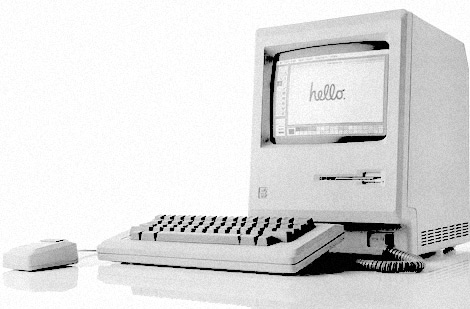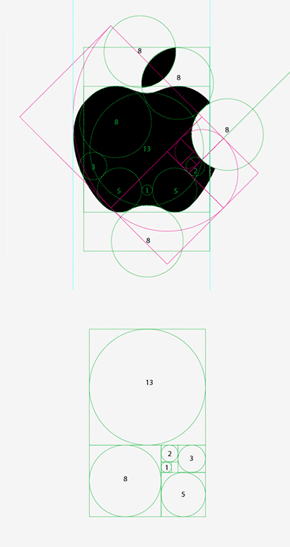March 8, 2012 In observatory
As a lifelong Apple computer user I recently felt compelled to read the Steve Jobs Biography. The book caught me off guard with the openness about Steve’s early life and the behind-the-scenes dialogues with Bill Gates and Apple’s internal struggles. Below I’ve summarized a few of the insights I gained from Steve while reading the book.
Insight
Form Follows Emotion
This is a version of the popular Bauhaus design principle – ‘form follows function’. The Bauhaus principle can be seen everywhere from architecture, vehicles, computers and nature. But Steve’s unique twist is that form follows emotion. To me this means that Job’s wanted people to have an emotional reaction to his products. He accomplished this through branding – both product designs, and brilliant marketing campaigns. The iconic 1984 Apple ad, and the later iPod and iPhone commercials helped to associate apple products with emotional reactions.

A Successful Company Needs 2 Types of Founders: A Geek and a Hippie
This is valuable insight into Steve’s philosophy in life and business. Steve realized that 2 opposite view points are needed to aide in creative collaboration. In this case, the geek might view the world in terms of science and numbers – while the hippie might have a more creative and free interpretation of the world. This juxtaposition of view points can create a fertile ground for ideas, and Steve often leveraged this to create great products.
Your Users are Not Always Right
Steve thought that most people don’t know what they want until you show it to them. Conventional wisdom says you should study your users and their demographics & potential reactions. Steve took a much more risky and possibly arrogant approach. Jobs knew that in order to create the next big thing you need to focus on your vision instead of worrying what people will think about it. This approach has a much higher chance of failure (it almost doomed apple once), but if the gamble pays off… well, look at Apple now.
On the Desire for a Complete Symbioses of Hardware and Software
Steve’s philosophy was that if hardware and software weren’t perfectly built for each other, that there would be inconsistency in the products. In order to take product integrity to the extreme Steve decided to create a closed development platform. It might be the smartest business move ever, and also one aspect that turns some users away.
Apple on Design
Jonny Ive and Apple Design
Jonny Ive helped shape Apple more than anyone, with the exception of Jobs. Ive’s intense dedication to product design elevated Apple’s perceived quality. Jobs saw Ive’s brilliance and attention to detail, and trusted his opinion more so than any other colleague. At times Jobs may have even claimed Ive’s ideas as his own. This may not have been malicious but possibly because Jobs considered Ive’s solutions and thinking to be brilliant since there were so similar to his own.

Steve’s Background in Art & Design
Steve was mostly taught about mechanics from his father who worked on many cars. But in this process Steve came to understand the beauty and function of each design element. This taught him about attention to detail and that even the unseen parts need to be designed well. In college, Steve also cites a calligraphy class as having a huge impact on his design aesthetic. The idea of line thickness and fluidity re-inforced the idea that computer fonts should not be restricted to one or two typefaces.
Influence of Zen Buddhism & Bauhaus on Product Design
One of Zen Buddhism’s core principles is that the mind is most sharp when it is in a state of ‘no mind’. The idea is that to be focused means having as little distractions as possible. This aligns with the Bauhaus movement of ‘less is more’. The idea translates to many of Apple’s flagship products: the iPod, iPad and iPhone were all designed so that the user experience was effortless.
Influence of Pixar
After being thrown out of Apple, the company he founded – Steve didn’t know what do to. His first idea was the NeXT computer system. He also became interested in Pixar and helped them create business deals with Disney. Pixar suffered rough times, but Jobs was able to learn from his experience at Apple and build Pixar into a major power.
John Lasseter at Pixar seemed to have a profound experience on Jobs. Lasseter was a master artist and operated with a calmness that really spoke to the idea of zen. More than anything, Jobs gained an amazing amount of insight from working with a true artist. Jobs was always the business mentor, but Lasseter was the artistic mentor who helped inform Jobs design aesthetic and shape the way that Jobs would work with future creatives. He learned that creatives need to be treated a bit different in order to create truly great products and designs
In Closing
 Steve Jobs was a man who knew that inventing the next big thing meant relying on his instincts and vision, instead of simply reacting to what people wanted. His ability to solve problems and create simple and universal solutions was more important than any business sense he had. Steve could see talent, build teams and motivate them to have a cult like mentality. He became a master of collaborating with designers and crafted the Apple brand to have an emotional response that few brands can match
Steve Jobs was a man who knew that inventing the next big thing meant relying on his instincts and vision, instead of simply reacting to what people wanted. His ability to solve problems and create simple and universal solutions was more important than any business sense he had. Steve could see talent, build teams and motivate them to have a cult like mentality. He became a master of collaborating with designers and crafted the Apple brand to have an emotional response that few brands can match
As I reflect on the book I see many valuable lessons for designers, developers, entrepreneurs, startups, technology companies and the future of the digital medium. Thanks for everything Steve.
 12
12
Leave a Reply
You must be logged in to post a comment.